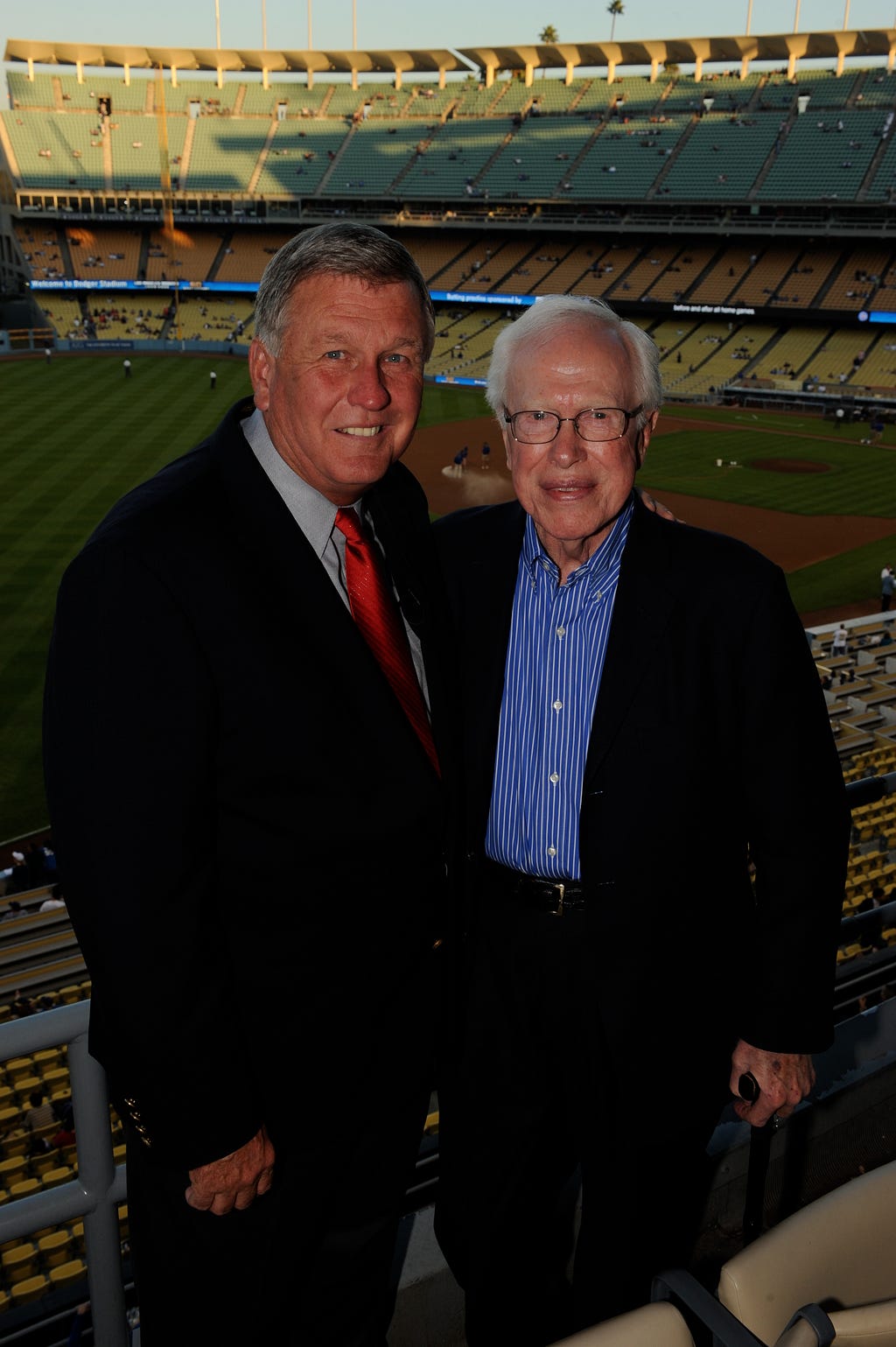
by Mark Langill
The actual plaster cast from baseball’s most famous experimental medical procedure — today commonly known as “Tommy John surgery” — is now housed at the Smithsonian Museum in Washington D.C.
The actual Tommy John is 81 years old and living in Bradenton, Florida.
On the 50th anniversary of his collaboration with Dr. Frank Jobe, the left-hander who won 288 games during a 26-year Major League career looks back with fondness and gratitude when recalling the longtime Dodgers’ team physician, who passed away in 2014 at age 88.
“We were a great pair,” John says. “Like the perfect wine that complements a great meal.
“Frank was the kindest, gentlest man I ever knew. Plus, he was a heck of a surgeon. I had great confidence in him.”
Jobe, a North Carolina native who studied medicine at Loma Linda University, had joined the Dodgers in 1968 as the Dodgers’ orthopedic doctor. He partnered with Robert Kerlan, the Los Angeles Rams and Lakers team physician, to form the Kerlan-Jobe Orthopedic Clinic, which became the leading sports medicine operation in the western United States.
“When Tommy ruptured that ligament, we really didn’t know what to do,” Jobe said in a 2006 interview. “But Tommy, being the kind of person he is, insisted that I do something because he wasn’t ready to quit pitching yet. In those days, there were not many surgeries done on athletes. It occurred to us that maybe we could do something to repair Tommy’s elbow, and the idea came from hand surgery that was done on polio victims.”
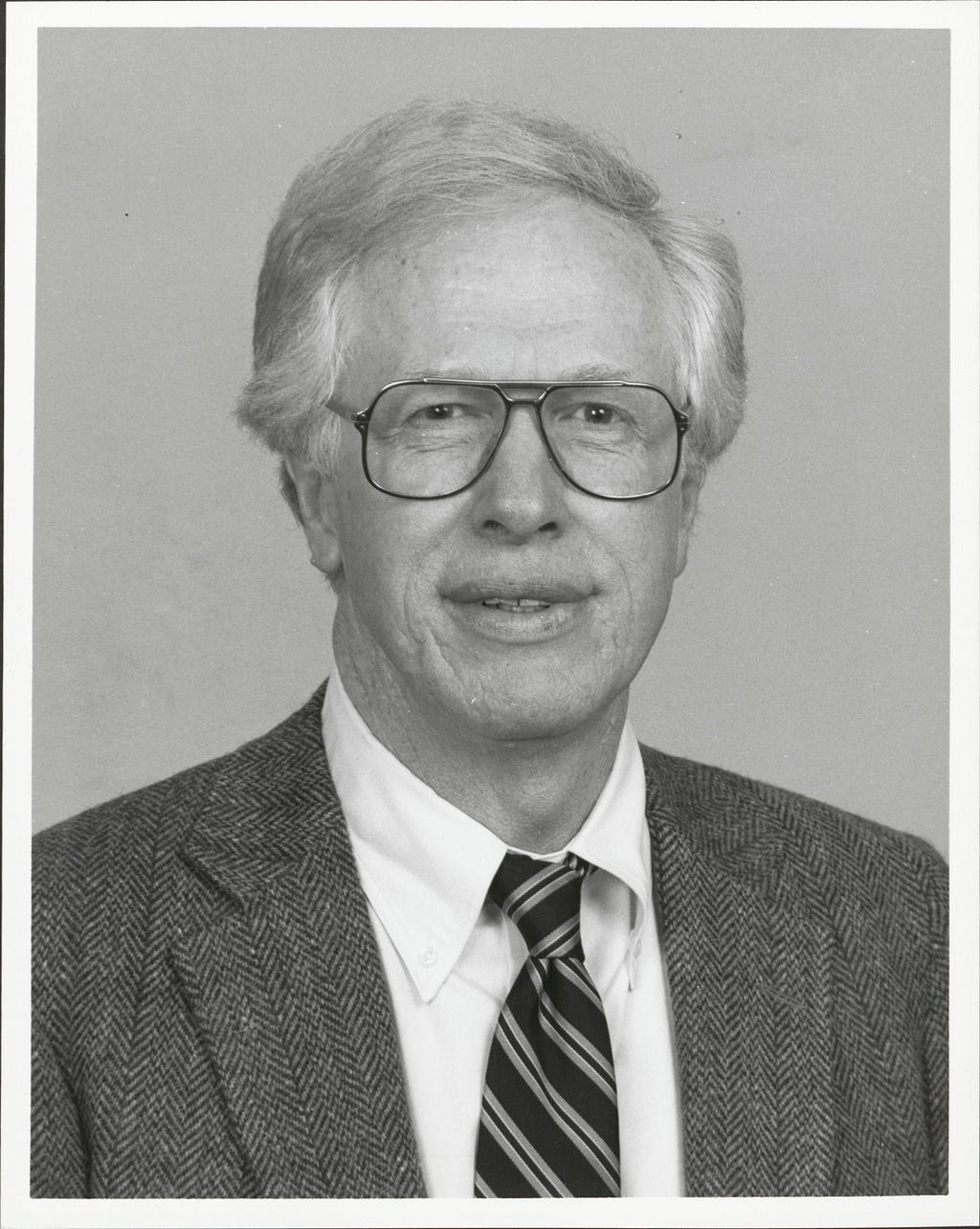
The Dodgers acquired John from the Chicago White Sox before the 1972 season in exchange for slugger Dick Allen. In 1973, John led the National League in winning percentage (.696) when he went 16–7 with a 3.10 ERA.
John opened the 1974 season with a 13–3 record as Los Angeles was headed toward its first National League pennant since 1966. On July 17, John started against the Montreal Expos at Dodger Stadium.
In the third inning, John had a 4–0 lead when facing Expos first baseman Hal Breeden with no outs and runners on first and second. At that point, John had thrown 2,164 innings in 355 games since 1963 with Cleveland, the White Sox, and Dodgers.
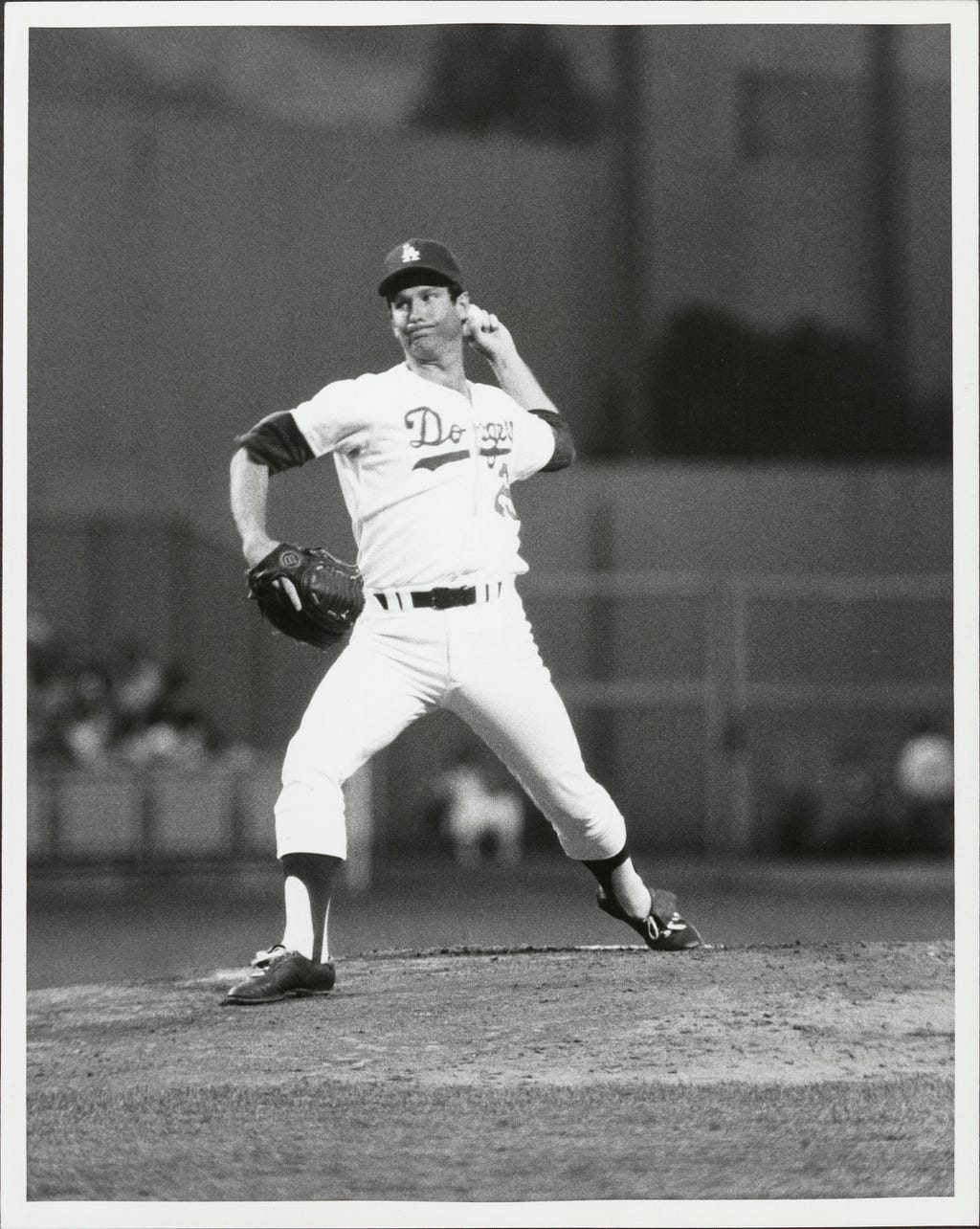
“My first pitch to Breeden was strange,” John says. “As I came forward and released the ball, I felt a kind of nothingness. Then I heard a pop from inside my arm and the ball just blooped up to the plate. I didn’t feel pain at this point, but just the strange sensation that my arm wasn’t there. It was the oddest thing I’d ever felt while pitching.
“I was more baffled than concerned, so I shook my arm and prepared for the next pitch. I released the ball and this time I heard a slamming sound like a collision coming from inside my elbow. I felt as if my arm had come off. The pitch barely made it to the catcher. I knew I was done. I immediately called time and started walking off the mound.”
John, who had suffered a ruptured elbow ligament, asked Jobe, “What are we going to do?”
There was no definitive answer. Jobe, though, performed a first-of-its-kind surgery.
Jobe estimated there was a “one in 100” chance of success, but John’s career would be over if he didn’t undergo the surgery.
The surgery occurred on Sept. 25, 1974. Jobe took a tendon from John’s right arm to replace the ligament in his left elbow. For Jobe, the concept of the surgery — reconstructing the ligament — made sense. He didn’t know whether the repair would hold up under the strain of pitching.
A few months into his rehabilitation, John needed a second surgery. He had lost the feeling in his left hand, which clawed up. The ulnar nerve was bruised and twisted. The nerve was rerouted on the inside of the elbow.
For the next two years, Jobe watched John’s every pitch and hoped the elbow would not blow out again. It never did.
According to a 2018 study by Stanford University, 12 Major League pitchers underwent Tommy John surgery between 1974 and 1994. That number increased to 22 surgeries between 1995 and 1999. During 12 years from 2000 to 2011, 194 surgeries were performed on Major League players, and 275 surgeries were performed on Minor League players. Joe Roegele, a baseball writer who has documented all Major League Tommy John surgeries since the first, reported that 35.3% of all MLB pitchers in 2023 had Tommy John surgery.
“You can’t argue the fact that collaboration, that operation, that relationship between those two impacted sports and sports medicine more than any other collaboration between a physician and a patient, or any other procedure,” says Dr. Neal ElAttrache, the Dodgers’ head team physician. “If you look at the impact that one procedure has had on the sport. No matter how you measure it — in extra years in a career, the amount of money involved, not just for the player but for the organization.
“Now what’s happening is the operation is more common, and unfortunately involving younger and younger people. By the time they get to the Major Leagues, 30 percent of them have already had Tommy John surgery. I can’t even imagine what baseball would look like today if it wasn’t for that operation.”
ElAttrache, an orthopedic surgeon specializing in sports medicine at Kerlan-Jobe Clinic in Los Angeles, studied under Jobe and was part of an original fellowship program in 1990 when Jobe went to the Dodgers’ Spring Training headquarters in Vero Beach, Florida.
He described Jobe’s outward appearance as “humble and meek,” yet knew his surgical abilities could push the traditional boundaries surrounding sports injuries. According to ElAttrache, Jobe focused on John’s ulnar collateral ligament, which wasn’t considered before 1974.
“The real innovation was when he was convinced this was the problem,” ElAttrache says. “If he could give some guys stability on that side, it would save the degenerative problems they were having. A lot of times, there is no ligament left.”
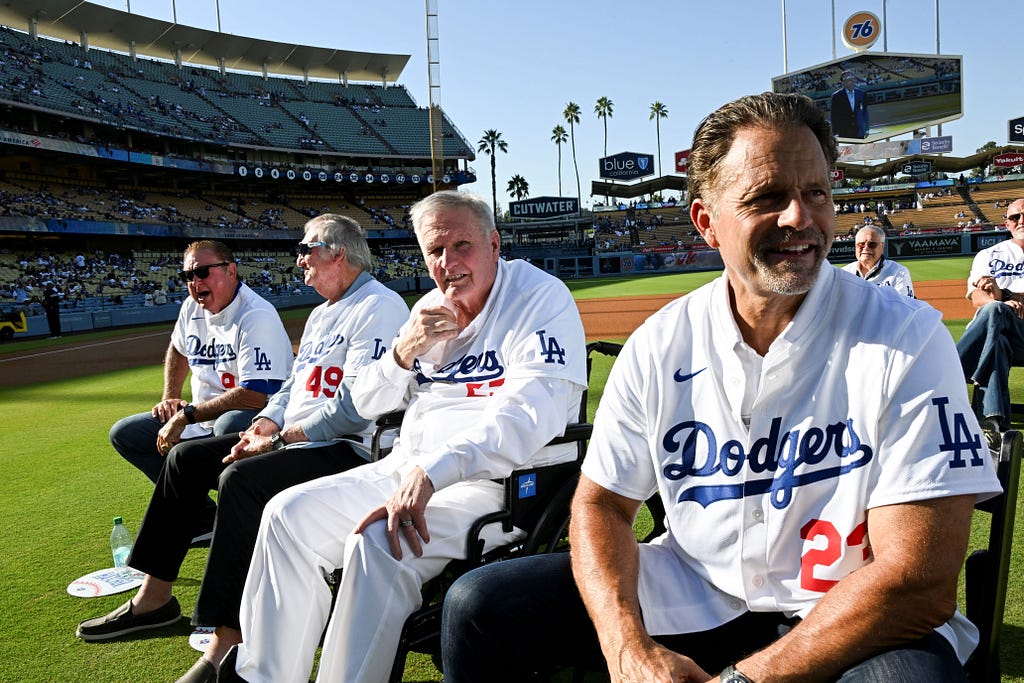
John said the Dodgers never pressured him on a timetable for his return to baseball. After an exhaustive physical rehabilitation, John returned to the pitcher’s mound in November 1975 at the Arizona Instructional League.
When he asked pitching coach Red Adams to monitor his mechanics during Spring Training in 1976, Adams laughed and pulled out a notebook from his back pocket.
“Red pointed to a line and said, ‘What does this say?’ He had already written, ‘Make sure TJ pitches like TJ.’ Red was a great instructor. He knew so much about pitching, but he didn’t push me,” John says.
In 1976, John won National League Comeback Player of the Year honors with a 10–10 record and 3.09 ERA in 31 starts. He won 20 games for the first time in 1977 and pitched the pennant-clinching game in the NL Championship Series, a 4–1 complete-game victory in Game 4 at Veterans Stadium which was played in a steady rainstorm.
“When I came back in 1976, it was halfway through the season that I finally figured out I could win even if I didn’t have my good stuff,” John says. “It wasn’t anything that anyone taught me. I just had to experience it.”
John left the Dodgers after the 1978 season and joined the Yankees as a free agent. He won 21 games in 1979 and a career-high 22 in 1980 when he pitched in the All-Star Game at Dodger Stadium. John won 164 games in the 14 seasons following the surgery. His 288 wins are the most by a pitcher not in the Hall of Fame.
Jobe saved thousands of baseball careers, including John and later Orel Hershiser. Jobe performed another groundbreaking surgery in 1990, this one on the the pitching great’s rotator cuff using three bone anchors — two years after Hershiser won the National League Cy Young Award, NL Championship Series and World Series MVP awards.
Three months after the surgery, Hershiser fell out of bed in the middle of the night. He called Jobe in desperation, thinking he had damaged the shoulder again and ruined the surgery. Jobe assured Hershiser that he would be fine. He was right.
“I went unde the knife with 99 career wins,” Hershiser said. “So Dr. Jobe’s surgically repaired shoulder ended up with more wins than the unsurgecially repaired shoulder. I always think he needs to be in the Hall of Fame because he has more wins and saves than anyone in basbeall.”
Jobe was honored at Cooperstown on July 27, 2013, as part of the Hall of Fame awards presentation for his development of Tommy John surgery. The next year, the Dodgers dedicated and named the home clubhouse training room at Dodger Stadium after the sports medicine pioneer.
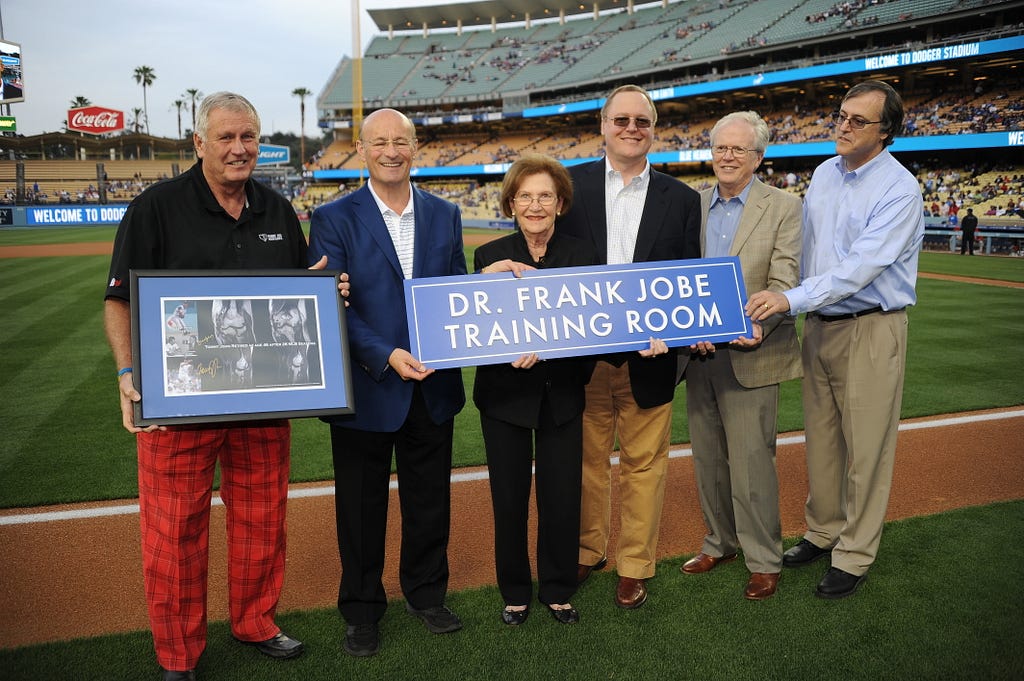
Dr. Frank Jobe’s pioneering Tommy John surgery turns 50 was originally published in Dodger Insider on Medium, where people are continuing the conversation by highlighting and responding to this story.
